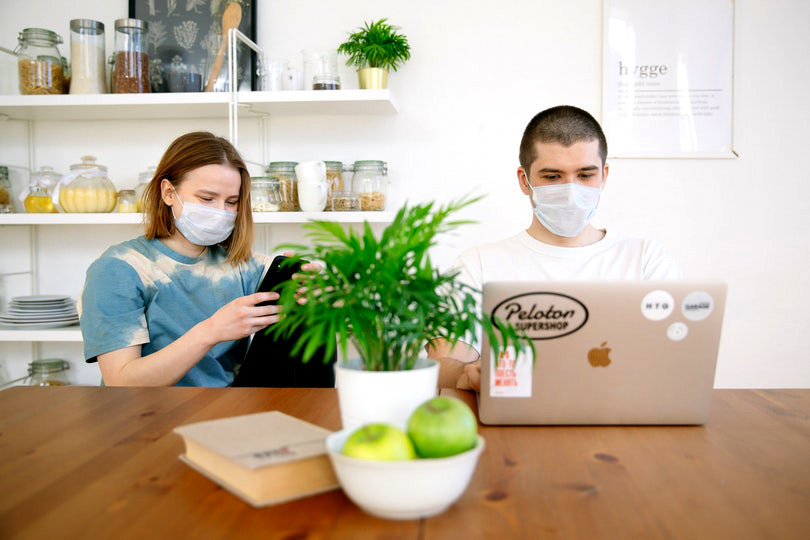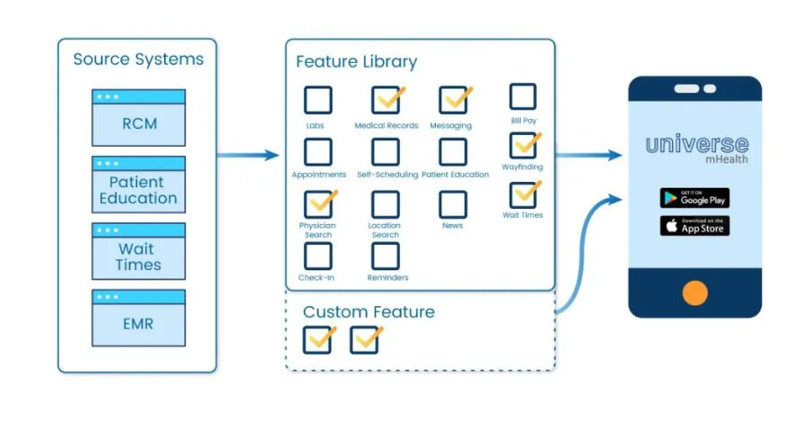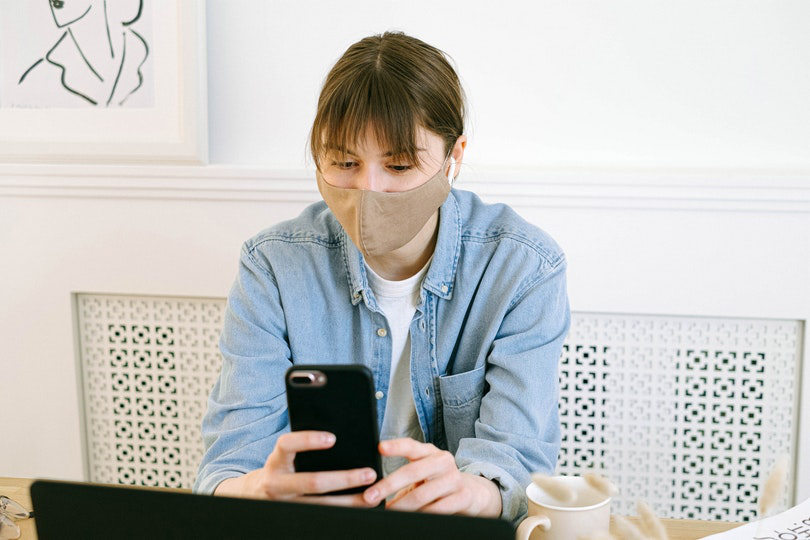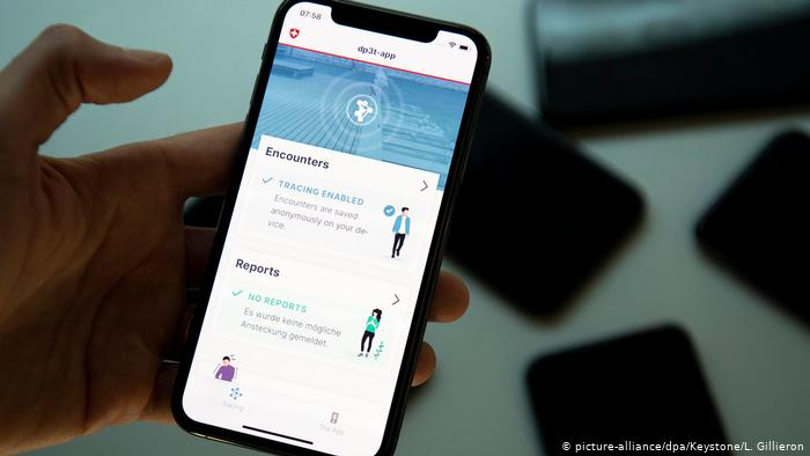The outbreak of coronavirus disease (COVID-19) was first reported from Wuhan, China, on December 31, 2019. COVID-19 is an infectious disease resulting in respiratory illness. Coronavirus disease spreads primarily through contact with an infected person when they cough or sneeze. It also spreads when a person touches a surface or object that has the virus on it, then touches their eyes, nose, or mouth. Because of this, people all over the world are practicing physical distancing.

Physical distancing is the act of minimizing virus spread by avoiding contact with other persons. During physical distancing, it is advised that people stay home. Following this advice, people and companies are turning to mHealth apps and healthcare mobile apps to help manage their wellbeing.
A “mHealth app” is an app offered by a healthcare organization to their patients for accessing information like lab results and medical records, while also providing tools like patient/clinician messaging.

Access To Health Records
During the COVID-19 outbreak, healthcare authorities have warned that immune-compromised individuals and those with underlying health issues are the most vulnerable to this virus. Through healthcare apps and mHealth solutions, patients are able to monitor their current health and make informed decisions accordingly. Patients can gain valuable insights into their health by accessing laboratory information through healthcare mobile apps. Healthcare providers can be alerted to lab results and work with patients to handle a positive or negative result. Patients will be able to access their COVID-19 results and share them with concerned parties such as their employer. Certain healthcare apps allow patients to log information about their health, such as heart rate, insulin levels, and other vital factors that people with underlying health issues monitor regularly.
Universe, a mobile healthcare app, supports bi-directional integration with Electronic Health Record (EHR) software, connecting patients with their clinical information and providers. Bi-directional, real-time messaging with providers and their team is easy with Universe.

Messaging
mHealth solutions provide 100% HIPAA-compliant messaging between patients and healthcare providers. Healthcare authorities have suggested that patients who are experiencing symptoms, first contact a healthcare professional remotely rather than going to a clinic directly for diagnosis, as this can further spread the virus. It has been found that when a healthcare professional is more accessible to patients, it improves patient outcomes. Direct messaging allows patients to gain information from a reliable source instead of falling victim to rumors and false news.
Messaging can help providers keep patients updated on wait times through the mhealth app. Real-time publishing of urgent care or emergency department wait times helps prevent patients from crowding reception areas, combating the spread of the virus.
HIPAA compliant messaging offers patients confidentiality in environments where the coronavirus is stigmatized. Mobile messaging allows patients in more rural areas to also speak to healthcare professionals during this crisis.
The World Health Organization (WHO) advises people to stay informed and follow the advice given by their healthcare provider. Patient-Provider messaging helps people stay informed on the latest developments about COVID-19.
Clear communication can allow for remote monitoring. Remote monitoring and treatment support allows for greater involvement in the continued care of patients. It will enable healthcare workers to better track patient conditions, medication regimen adherence, and whether a patient will need to be admitted to the hospital or not.

Patient Education
Education and awareness programs within the mHealth field are primarily focused on the spreading of mass information from provider to patient. mHealth apps offer information about various subjects, including testing and treatment methods, availability of health services, and disease management.
Patient education within these apps can be used to cover the fundamentals of infection prevention and control for COVID-19, including:
- COVID-19 – what is it?
- Signs and symptoms
- Keeping safe – protecting yourself and others
- Myth-busting
Healthcare mobile apps and mHealth apps can provide detailed information, such as links to external resources (e.g., CDC and WHO), symptom information, visit/scheduling protocol, and other information regarding COVID-19. Patient education provides straightforward, actionable guidance for users to take control of their health. Healthcare apps offer general tips and resources for users around the world to reduce the spread of rumors and connect with accurate health information.
“Getting up to date information about COVID-19 to local communities around the world is a critical piece of the international community’s efforts to stem the spread of the virus,” said Achim Steiner, Administrator of the United Nations Development Programme (UNDP).
The World Health Organization suggests maintaining one’s mental health by gathering information from the WHO website and local health authority platforms to help you distinguish facts from rumors. mHealth apps can contain a link to the most recent COVID-19 updates from WHO.
Patient Education can also be used to update patients on new protocols within healthcare organizations implemented to combat the COVID-19 virus.

Epidemic Outbreak Tracking
mHealth solutions can collect and transmit data quickly, cheaply, and relatively efficiently. Data concerning the location and levels of COVID-19 can help healthcare organizations identify outbreaks and better target medical resources to areas of greatest need.
Policymakers and health providers need accurate data to gauge the spread of the virus and how preventative and curative measures are combating it. In the developing world, collecting field information is particularly difficult since many people are unable to visit a hospital. A lack of patient data creates a problematic environment in which policymakers can decide where and how to spend their (sometimes limited) resources.

Telehealth
Multiple mhealth solutions have telehealth functionality. Telehealth is the use of electronic information and telecommunications technologies to support and promote long-distance clinical health care.
Telehealth allows healthcare providers to conduct consultations with patients while both parties maintain a safe distance, preventing the spread of the virus. Due to the pandemic, healthcare authorities have urged the public and organizations to make use of telehealth.
The Health and Human Services (HHS) plans to expand the access of telemedicine throughout the USA to combat COVID-19. “Providers will be allowed to use everyday technologies to talk to telehealth patients, more telehealth services will be covered for millions more Medicare beneficiaries, and providers will be allowed to offer these telehealth benefits to Medicare beneficiaries at a lower cost than traditional services.” – Alex Azar, HHS Secretary.
Video conferencing platforms such as Zoom also provide means in which healthcare organizations can conduct e-visits between patients and providers. Previously the use of video conferencing platforms to provide telehealth has been frowned upon due to HIPAA policy. During this time, health care providers will not be subject to penalties for violations of the HIPAA Privacy, Security, and Breach Notification Rules that occur in the good faith provision of telehealth during the COVID-19 nationwide public health emergency.







